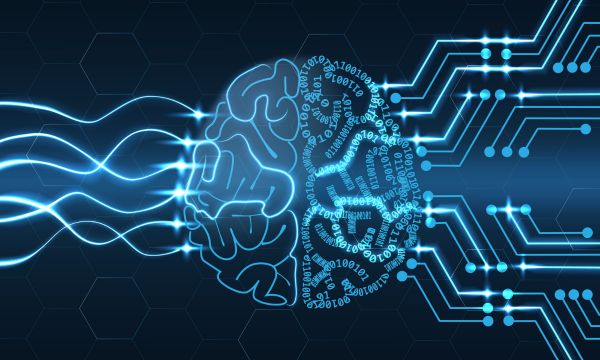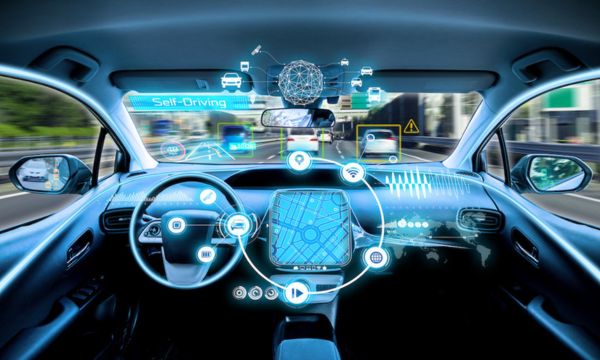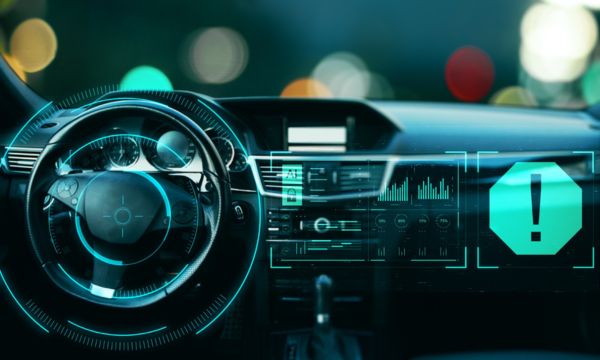Harnessing Artificial Intelligence for Energy-Efficient Driving
In recent years, the automotive industry has undergone dramatic changes in terms of sustainability, with an increasing focus on driving in a way that uses less energy.
Concerns about the environment and fuel consumption are increasing. Adding artificial intelligence (AI) to vehicles has become an important way to improve fuel economy and make driving more efficient.
This article discusses the role of artificial intelligence in encouraging drivers to use less gasoline. It talks about the latest technological developments, their pros and cons, and their hopes for the future.
1. AI-Powered Eco-Driving Algorithms:
Artificial intelligence is a key part of the progress being made in creating advanced eco-driving programs, which use large amounts of data to find the best way to use fuel.
These systems use real-time information from multiple sources, such as sensors, GPS, traffic reports, and weather forecasts.
By looking at this data, the AI system can make informed choices about how to improve driving behavior by changing things like acceleration or deceleration and gear shifting frequency.
2. Predictive Analytics for Optimal Route Planning:
AI-powered predictive analytics allows vehicles to guess and adapt to traffic conditions, making route planning more energy efficient.
The machine learning algorithm looks at past traffic trends and takes into account factors such as weather, traffic conditions and time of day.
By predicting times of traffic congestion and offering alternate routes, AI gives drivers the information they need to make informed choices that reduce gas mileage.
3. Adaptive Cruise Control and Intelligent Speed Management:
Modern cars equipped with adaptive cruise control systems powered by artificial intelligence can adjust their speed according to prevailing road conditions.
These systems ensure smooth driving patterns by maintaining a safe following distance and adjusting speed based on traffic flow.
This means less gas is used. Additionally, the smart speed management system uses artificial intelligence to view speed limits, road conditions and previous driving data to find the best speed to save fuel.
4. Intelligent Energy Management System:
Smart energy management systems based on artificial intelligence take advantage of hybrid and electric vehicle technology. To find the best way to use electricity, these systems take into account factors such as road conditions, battery level and the availability of charging stations.
Artificial intelligence ensures optimal use of energy by intelligently switching between the combustion engine and the electric motor. This increases the range of electric vehicles and reduces overall energy consumption.
5. Monitor Driving Behavior and Provide Feedback:
AI can observe drivers’ behavior in real time and provide them with immediate feedback, encouraging them to drive with less energy.
The system uses sensors and cameras built into the car to monitor for conditions such as hard acceleration, hard stops and excessive idling.
Artificial intelligence encourages more conscious and economical driving by providing feedback and improvements. This saves energy in the long term.
6. Communication from Vehicles to Other Objects (V2X):
V2X communications means cars can share data with each other, the infrastructure and the world around them.
Artificial intelligence is important for processing and understanding large amounts of data, allowing cars to make informed choices for energy-efficient driving.
For example, V2X communications can help cars work together at intersections so they don’t have to stop and start as often, saving fuel.
7. Questions and Things to Think About:
Applying artificial intelligence to cars that use less energy is promising, but also poses some problems.
Some issues that need to be carefully considered include the need for standardized communication protocols for V2X systems, privacy issues surrounding the collection and sharing of driving data, and the possibility that the system is weak.
The costs associated with building AI technology into cars could also deter many people from using it.
8. Environmental Impact and Sustainability:
AI-powered economical driving is good for the planet in more ways than one. Artificial intelligence helps clean the air and reduce the carbon footprint by finding the best ways to boost and reduce emissions.
As governments and people become increasingly concerned about the environment, the use of artificial intelligence in the automotive industry aligns with larger environmental goals.
9. Future Prospects and Industry Collaboration:
The future of artificial intelligence in driving that consumes less energy looks bright. As machine learning, sensor technology and communications continue to evolve, AI-powered systems will be able to do even more.
Automakers, technology companies and politicians must work together to set industry standards, address regulatory issues and build an ecosystem that encourages widespread use of AI for more fuel-efficient driving.

Artificial-Intelligence-for-Energy-Efficient-Driving (Source – Google)
Conclusion
Artificial intelligence has become one of the most important tools in the pursuit of more economical driving. AI technology makes smart energy management easier and more efficient to optimize driving behavior, making the automotive world more sustainable and environmentally friendly.
Despite the challenges, ongoing research, collaboration between industries, and technological advances indicate that artificial intelligence will play a key role in reducing environmental damage from transportation.
Applying artificial intelligence to cars not only improves their fuel efficiency, but also aligns with the world’s efforts to make the future cleaner and more sustainable.
FAQs
1. What role does AI play in energy-efficient driving?
Artificial intelligence is an important part of driving that uses less energy because it uses formulas and real-time data analysis to find the best way to drive.
It helps make informed choices about speeding up or slowing down and planning routes, improving fuel economy in the long term.
2. What role do AI-driven algorithms play in ecological driving?
Algorithms powered by artificial intelligence collect data from many places, such as sensors, GPS and traffic conditions.
By looking at this data, computers can change the way people drive and make choices that use the least fuel possible.
This includes changing the way the vehicle accelerates, slows down and shifts gears.
3. Can AI help identify and avoid traffic jams, thereby reducing a car’s fuel consumption?
Yes, AI-powered predictive analytics looks at past traffic trends, weather conditions and other relevant data to guess when traffic conditions will worsen.
Artificial intelligence helps drivers avoid unnecessary delays and reduce gas consumption by suggesting different routes and making trip planning work better.
4. What is adaptive cruise control? How can artificial intelligence make it better to save energy?
Sensors in adaptive cruise control ensure that the car can adjust its speed based on the traffic flow.
AI makes the system better by processing real-time data to make informed choices about how to change the speed.
This makes driving more comfortable and ensures that the car uses less gasoline by better controlling the speed.
5. What role does artificial intelligence play in smart energy management of electric and hybrid vehicles?
The smart energy management system, controlled by artificial intelligence, takes into account information such as driving conditions, battery level and the availability of charging facilities.
Artificial intelligence ensures optimal use of energy by intelligently switching between the combustion engine and the electric motor.
This increases the range of electric vehicles and reduces overall energy consumption.
6. Can artificial intelligence observe and change the energy-saving behavior of motorists?
Yes, AI can use sensors and cameras to observe driver behavior in real time. Artificial intelligence provides feedback by observing situations such as sudden acceleration and hard braking, encouraging the driver to use less energy.
This real-time data can help drivers become more aware of their driving behavior and use less gasoline.
 Enhancing Safety: AI-Driven Collision Avoidance
Enhancing Safety: AI-Driven Collision Avoidance
As technology continues to change, artificial intelligence (AI) is becoming increasingly important in many areas. One very […]
More Understanding AI in Autonomous Vehicles
Understanding AI in Autonomous Vehicles
Self-driving cars, also known as self-driving cars, are a major technological advancement that relies heavily on artificial […]
More Revolutionizing Driving: AI Integration in Cars
Revolutionizing Driving: AI Integration in Cars
The automotive industry is undergoing a major transformation as artificial intelligence (AI) is applied to cars. As […]
More